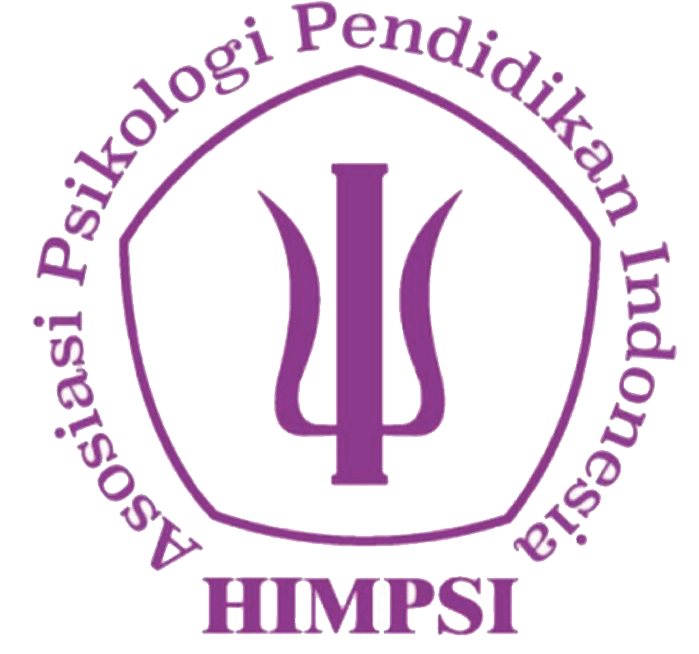Marital attitude mahasiswa ditinjau dari kondisi pernikahan orang tua
Abstract
Abstract: In previous research, differences in marital attitudes have been examined among students with divorced and harmonious parents. However, unlike previous studies, this research seeks to test the differences in marital attitudes among students not only based on the marital status of their parents (divorced or intact) but also based on the quality of their parents' relationship (harmonious or conflicted). The chosen method of analysis is a comparison test. The sample for this study consists of IAIN Kediri students aged 18-23 years. Using quota sampling, a total of 123 students were obtained. From the total number of students, they were divided into three categories: students with divorced parents, students with intact parents but in conflicted relationships, and students with harmonious parents. The number of respondents in each category was 41 students. The measurement tool used was the General Attitudes Toward Marriage Scale (GATM). Data analysis in this study employed ANOVA. The test results indicated differences in marital attitudes among students with harmonious parents, intact but conflicted parents, and divorced parents. The implications of this study suggest that practitioners in related fields should develop appropriate premarital guidance programs for students to acquire information and cultivate more positive marital attitudes
Keywords: marriage attitudes; parents' marital conditions; parents
Full Text:
PDF (Bahasa Indonesia)References
Alqashan, H., & Alkandari, H. (2010). Attitudes of Kuwaiti young adults toward marriage and divorce. Advances in Social Work, 11(1), 33–47. https://doi.org/10.18060/255
Antony, E. M. (2022). Framing childhood resilience through bronfenbrenner’s ecological systems theory: A Literature review. Cambridge Educational Research E-Journal, 9, 244–257. https://doi.org/10.17863/CAM.90564
Bennett, K. M. (2005). Psychological wellbeing in later life: The longitudinal effects of marriage, widowhood and marital status change. International Journal of Geriatric Psychiatry, 20(3), 280–284. https://doi.org/10.1002/gps.1280
Chapman, B., & Guven, C. (2016). Revisiting the relationship between marriage and wellbeing: does marriage quality matter? Journal of Happiness Studies, 17(2), 533–551. https://doi.org/10.1007/s10902-014-9607-3
Gove, W. R., & Tudor, J. F. (1973). Adult sex roles and mental illness. American Journal of Sociology, 78(4), 812–835. https://doi.org/10.1086/225404
Huang, Y. C., & Lin, S. H. (2014). Attitudes of Taiwanese college students toward marriage: A comparative study of different family types and gender. Journal of Comparative Family Studies, 45(3), 425–438. https://doi.org/10.3138/jcfs.45.3.425
Jones, G. D., & Nelson, E. S. (1997). Expectations of marriage among college students from intact and non-intact homes. Journal of Divorce and Remarriage, 26(1–2), 171–189. https://doi.org/10.1300/J087v26n01_09
Kefalas, M. J., Furstenberg, F. F., Carr, P. J., & Napolitano, L. (2011). “Marriage is more than being together”: The meaning of marriage for young adults. Journal of Family Issues, 32(7), 845–875. https://doi.org/10.1177/0192513X10397277
Kessler, R. C., & Essex, M. (1982). Marital status and depression: The Importance of coping resources. Social Forces, 61(2), 484. https://doi.org/10.2307/2578238
Kim, H. K., & McKenry, P. C. (2002). The relationship between marriage and psychological well-being: A longitudinal analysis. Journal of Family Issues, 23(8), 885–911. https://doi.org/10.1177/019251302237296
Lucas, R. E., Clark, A. E., Georgellis, Y., & Diener, E. (2003). Reexamining adaptation and the set point model of happiness: reactions to changes in marital status. Journal of Personality and Social Psychology, 84(3), 527–539. https://doi.org/10.1037/0022-3514.84.3.527
Mastekaasa, A. (1992). Marriage and Psychological Well-Being: Some evidence on selection into marriage. Journal of Marriage and the Family, 54(4), 901. https://doi.org/10.2307/353171
Miles, N. J., & Servaty-Seib, H. L. (2010). Parental marital status and young adult offspring’s attitudes about marriage and divorce. Journal of Divorce and Remarriage, 51(4), 209–220. https://doi.org/10.1080/10502551003597865
Nabila, N., & Aditya, Y. (2022). Perbandingan marital attitudes antara dewasa muda dari keluarga utuh dan bercerai. Jurnal EMPATI, 11(2), 80–90. https://doi.org/10.14710/empati.2022.34427
Nasrabadi, Z. T. A. N., Moghadam, Z. B., & Hamid Salehiniya, E. R. (2016). A Review of the factors associated with marital satisfaction - Shahrekord University Of Medical Sciences. N.d.). Galen Medical Journal, 6(3), 197–207. https://doi.org/10.22086/gmj.v0i0.641
Obeid, S., Al Karaki, G., Haddad, C., Sacre, H., Soufia, M., Hallit, R., Salameh, P., & Hallit, S. (2021). Association between parental divorce and mental health outcomes among Lebanese adolescents: results of a national study. BMC Pediatrics, 21(1). https://doi.org/10.1186/s12887-021-02926-3
ØDEGARD, O. (1952). Marriage and mental health. Acta Psychiatrica et Neurologica Scandinavica. Supplementum, 80(2), 153–161. https://doi.org/10.4102/sajpsychiatry.v12i
Park, S. S., & Rosén, L. A. (2013). The marital scales: Measurement of intent, attitudes, and aspects regarding marital relationships. Journal of Divorce and Remarriage, 54(4), 295–312. https://doi.org/10.1080/10502556.2013.780491
Riggio, H. R., & Weiser, D. A. (2008). Attitudes toward marriage: Embeddedness and outcomes in personal relationships. Personal Relationships, 15(1), 123–140. https://doi.org/10.1111/j.1475-6811.2007.00188.x
Robles, T. F., Slatcher, R. B., Trombello, J. M., & McGinn, M. M. (2014). Marital quality and health: A meta-analytic review. Psychological Bulletin, 140(1), 140–187. https://doi.org/10.1037/a0031859
Santrock, J. W. (2011). Life-span Development (13th ed.). McGraw-Hill.
Soulsby, L. K., & Bennett, K. M. (2015). Marriage and Psychological Wellbeing: The Role of social support. Psychology, 06(11), 1349–1359. https://doi.org/10.4236/psych.2015.611132
Tullius, J. M., De Kroon, M. L. A., Almansa, J., & Reijneveld, S. A. (2022). Adolescents’ mental health problems increase after parental divorce, not before, and persist until adulthood: a longitudinal TRAILS study. European Child and Adolescent Psychiatry, 31(6), 969–978. https://doi.org/10.1007/s00787-020-01715-0
Turzillo, A. M., Campion, C. E., Clay, C. M., & Nett, T. M. (1994). 済無No Title No Title No Title. In Paper Knowledge . Toward a Media History of Documents (Vol. 135, Issue 4, pp. 0–116). http://dspace.unitru.edu.pe/bitstream/handle/UNITRU/10947/Mi
Veronika, M., & Afdal, A. (2021). Analisis kepuasan pernikahan pada pasangan suami istri yang bekerja. Jurnal EDUCATIO: Jurnal Pendidikan Indonesia, 7(1), 81. https://doi.org/10.29210/1202121150
Willoughby, C. E., Ponzin, D., Ferrari, S., Lobo, A., Landau, K., & Omidi, Y. (2010). Anatomy and physiology of the human eye: Effects of mucopolysaccharidoses disease on structure and function - a review. Clinical and Experimental Ophthalmology, 38(SUPPL. 1), 2–11. https://doi.org/10.1111/j.1442-9071.2010.02363.x
DOI: https://doi.org/10.18860/psikoislamika.v20i1.21041

This work is licensed under a Creative Commons Attribution-NonCommercial-ShareAlike 4.0 International License.


.jpg)


.jpg)